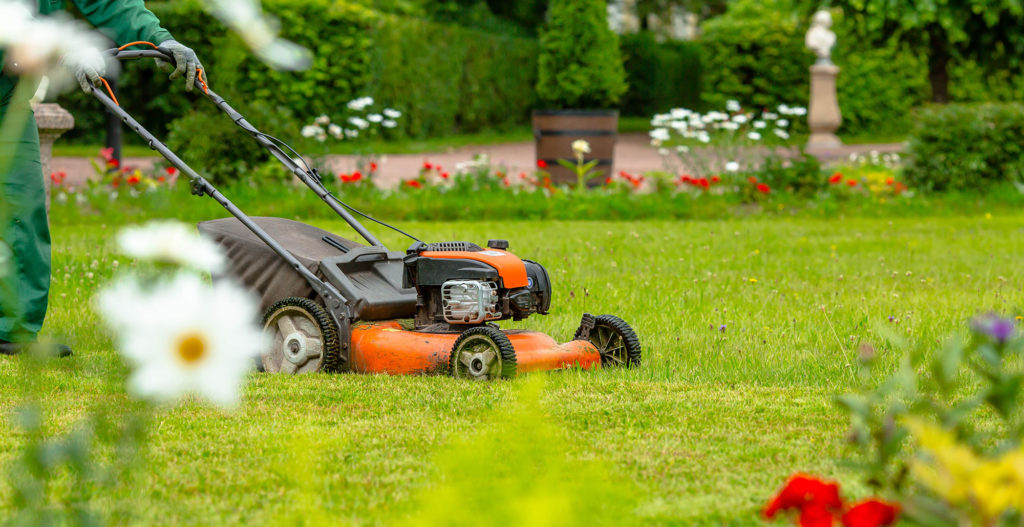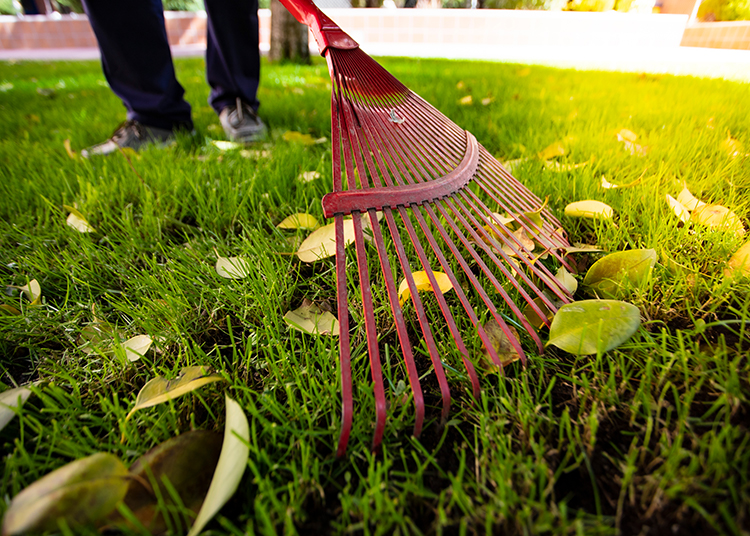
Spring is right around the corner! As temperatures start to rise, Carolina Fresh Farms has put together a list of useful spring lawn care tips to help ensure a thriving, green lawn all year long. Be sure to check out our various guides for each grass type on our care page.
Fertilizer
Applying fertilizer in the spring will help your grass transition into the warmer months. It’s critical that you get your lawn the appropriate nutrition it needs at this time so that it flourishes all year long. Carolina Fresh Farms takes the guesswork out of choosing a fertilizer program that best suits your lawn’s needs this spring. Our variety of fertilizer programs for your bermuda, centipede, fescue, St. Augustine and zoysia will set your lawn up for success this spring. Contact us or stop by one of our seven locations to learn more.
Water
It is normal to reduce irrigation during the colder winter months. However, as it starts to warm up, you will need to turn your irrigation system back on. You still don’t have to rush to water your lawn though. The roots will be the first thing to grow in the springtime and if the soil’s dry, the roots will just go deeper. You still want the soil to be moist enough to promote growth though. Your grass should need between 1–1.5 inches of water per week including rainfall. Be careful not to overwater your lawn so that you don’t promote disease outbreaks.
Mowing
Mowing should take place once your grass has come out of dormancy and after the last frost. If your grass never went into dormancy, you should still wait until after the last frost has hit. The date of the last frost varies by location. Check out the below mowing heights for different grass types in the spring:
- Zoysia: 1–1.5 inches
- St. Augustine: 2–3 inches
- Bermuda: 1–1.5 inches
- Centipede: 1.5–3 inches
- Fescue: 3.5 inches
Raking
If you had any fallen leaves accumulate over the spring, now is the time to rake them up and remove them. The shade the leaves create on your grass provides opportunity for disease outbreaks, plus, you need sunlight to help your grass photosynthesize and grow once it starts to warm up. Raking will also give you the chance to remove any dead grass that didn’t survive throughout the winter and pull up thatch so that you can promote new growth.

Fill in Bare Spots
If you notice any dead or bare spots throughout your lawn, fill them in by overseeding with a grass seed selection that matches your grass at home. Overseeding in the spring with the same kind of grass will fill in those damaged spots so that your lawn is green throughout. Carolina Fresh Farms has an array of seed products you can purchase like Carolina Blue II Fescue and others. Stop by one of our seven locations to check out what all we have to offer.
Collect a Soil Sample
Spring is an excellent time to collect and submit a soil analysis for warm season grasses like zoysia, bermuda, St. Augustine and centipede. Soil samples are an excellent way to measure your lawn’s health and nutritional balance. They are great management tools to assist in any fertilizer decisions for your lawn and garden. In turn, you can begin optimizing and maintaining the appropriate soil fertility levels and pH balance. Once you’ve collected a soil sample, simply drop it off at one of Carolina Fresh Farms’ seven locations free of charge. Learn more about soil samples here.
Control Weeds with Pre-Emergent Herbicides
Another vital part of spring maintenance is making pre-emergent herbicide applications in the spring. There are two different types of herbicides—a post-emergent and a pre-emergent. A post-emergent is designed to control weeds you are currently experiencing. A pre-emergent herbicide is exactly what its name implies: an herbicide that prevents weeds from growing in the first place.
Along with fall, the spring season is another ideal time to apply a pre-emergent herbicide to prevent summer weeds.
Weeds are much easier to deal with before they become an issue, which is why we recommend that our customers use a pre-emergent before weeds are able to take hold in a lawn. Weeds begin to germinate in the spring when soil temperatures reach about 55 degrees Fahrenheit. This often falls around the last week of February and first week of March.
We recommend an application of a fertilizer/pre-emergent mix that is 0-0-7 0.38 % Prodiamine for warm season lawns, which provides fertilizer and more pre-emergent to extend control of summer weeds. This pre-emergent formula is combined with a fertilizer so that your lawn receives nutrition and weed control in one application. This granular product can be easily applied with a broadcast or drop spreader at the appropriate rate stated on the product label. It’s important to apply a pre-emergent within that window so that weeds don’t take over your lawn in the warmer months. Learn more about spring pre-emergents here.

Disease Prevention and Control
Along with the fall season, spring is also a prime time for disease outbreaks in warm season lawns whereas summer is the biggest time for disease outbreaks in cool season grass.
Fungal outbreaks are most likely to occur when there is thatching present, where there is an accumulation of leaves or organic matter, when overwatering has occurred and in moist/shaded areas. As temperatures and soil conditions change from winter to spring, the ideal environment for disease occurs. The only way to officially diagnose a turfgrass disease is to send a sample to your local university extension office, but there are other relatively simple ways to identify a fungal problem. Large, circular or irregularly shaped dead spots/patches that differ from your lawn’s color will begin to appear.
The best way to manage fungal disease in your lawn is with the use of a systemic fungicide. The great thing about fungicides is that they can be applied preventatively before an issue arises, or curatively after a fungal outbreak presents itself. Headway, Armada, Heritage G and Pillar are great products designed to tackle fungal disease both preventatively and curatively.
Armada 50 WDG is available in water-dispersible granules that must be mixed with water and applied using a backpack sprayer. Alternatively, you have the option of using granular products such as Headway, Eagle, and Pillar, which require spreading using a suitable spreader.
It can be advantageous to rotate between these products periodically. This practice helps prevent diseases from developing resistance to a specific fungicide and minimizes the risk of exposing the disease to a single product repeatedly.
There may arise a need for a second fungicide application. Typically, fungicides remain active in the soil for approximately 21–28 days. If your lawn has previously encountered a disease outbreak, pathogens might still linger in the soil, particularly following extended periods of rainfall within the initial 21–28 days. In cases of limited rainfall, the efficacy of the fungicide may persist for a longer duration.
Be sure to stop by our store to find these popular fungicide products and read the labels thoroughly before application
This is a list of our top spring maintenance tips for your lawn. For more information, refer to our care page for detailed maintenance on each grass type.
Related Products
Sorry, we couldn't find any posts. Please try a different search.
